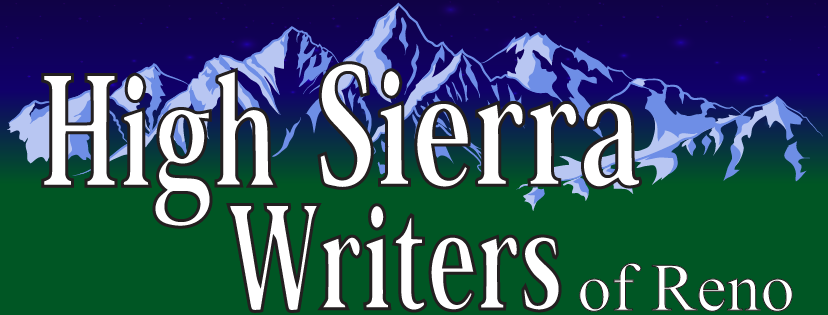From the HSW President
No, I’m not going to talk about New Year’s writing resolutions or how to find the time to write. Instead, I want to talk about a coincidence that brought into focus an issue near and dear: showing vs. telling and how much detail is enough.
Last week I read two recently published books: Camino Island by John Grisham and A Legacy of Spies by John LeCarre’. The subject matter couldn’t be farther apart. The former is about the theft of valuable literary manuscripts and the latter is a spy novel.
I hated Camino Island and loved A Legacy of Spies. Why? The coincidence I mentioned is that both books have a substantial amount of telling. Why does one work and the other doesn’t? Le Carre’ provides detail that at first seems unconnected. Imagine a bowl of alphabet soup with letters randomly appearing. But at some point the letters begin to form into important information. With the Grisham book, we look at the same bowl of alphabet soup and realize we’re just looking at soup. Even when he appears to be showing, such as in dialogue, Grisham’s characters are still telling. And telling.
Apart from a lackluster plot, Camino Island has unimportant characters of which we learn too much. We get page after page of meaningless dialogue or summary or description. I got the sense that Grisham had a 50-page story, but he needed 300 pages, so he backed up the dump truck and dropped a lot of fill dirt.
The contrast with Le Carre’ is that each piece of dialogue, each backstory, slowly weaves into a tighter and tighter net and seemingly unrelated information begins to form a picture.
As an editor, I try to get my clients to avoid too much detail. But in these two contrasting books, we see Le Carre’ push beyond the limits of what I would normally feel comfortable with, yet he pulls it off with skill. Why? Because his details have meaning. Grisham, on the other hand, needs to get taken to the woodshed by his editor.
The lesson here is to make sure every detail drives toward a plot point. Details that do this will eventually satisfy the reader. Details that don’t will only aggravate. The former have purpose; the latter are bloat.
Matt Bayan
It’s a New Year!
Dues are Due!
It’s the new year and we all need to become members or renew memberships. The small membership fee of $25 per year goes toward renting our meeting space at the library, paying speakers to make presentations and hold workshops, buying supplies such as name tags and markers, keeping a post office box, and operating a bank account. Your membership fee is tax deductible; High Sierra Writers is a 501 (3) (c) non-profit corporation.
Critique Groups
Critiquing is critical to the development of any writer. Yes, receiving feedback will help you to see your work-in-progress more clearly. But giving feedback might be even more important. Developing good critique skills teaches your mind to analyze story elements. It teaches you to sift the beautiful from the mundane. And that training—sharpened in the process of helping someone else—will carry over into your own writing. – Daniel Schwabauer,
OneYearNovel.com
Contact Nicole, your Critique Group Wrangler, to join a Reno-based group in 2018!
cgwrangler@highsierrawriters.org
1st Meeting of the Year is January 13. 2018
FIRST PAGES
Our regular feature. Give your first pages to Matt at the beginning of the meeting. Please put the genre at the top of the page, use Times New Roman font at 12 pt., and double space. This makes it easier to read.
QUERIES
A short discussion on how to target your queries with a demo of a helpful tool to do it efficiently.
High Sierra Writers meeting is at 10:00 a.m. at the South Valleys Library, 15650 Wedge Parkway.
February Meeting Preview
MAPPING YOUR CHARACTER’S INTERNAL LANDSCAPE – February 10, 2018
 Special Guest: TERRI FARLEY
Special Guest: TERRI FARLEY
This workshop works best if writers arrive with a picture – ripped from a magazine, printed from the Internet – that resembles their character.
 Farley is an advocate for the West’s wild horses and works with young people learning to make their voices heard. Wild at Heart: Mustangs and the Young People Fighting to Save Them is her first work of non-fiction. Chosen as a Junior Library Guild selection, Wild at Heart was published by Houghton-Mifflin-Harcourt in September 2015.
Farley is an advocate for the West’s wild horses and works with young people learning to make their voices heard. Wild at Heart: Mustangs and the Young People Fighting to Save Them is her first work of non-fiction. Chosen as a Junior Library Guild selection, Wild at Heart was published by Houghton-Mifflin-Harcourt in September 2015.Missing an issue of our newsletter? The most recent issues can be found in the archive by clicking the View this in your browser link at the top of this email. From there, you can select the previous issues. this is a new feature at MailChimp and the archive will continue to grow to 20 previous issues over time. Issues for this year thorough August are also available on our website www.highsierrawriters,org
|
